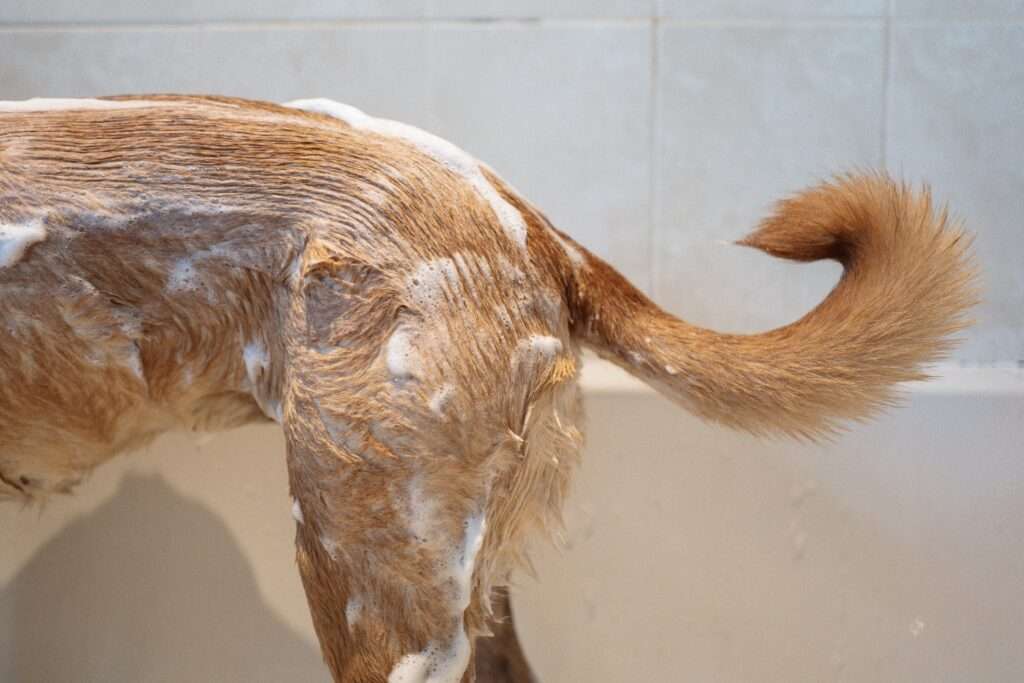Is Dog Scratch Reflex Bad for Your Pup’s Health? Answering the Itchy Question
Dogs are fascinating creatures, full of quirks and unique behaviors that set them apart from other animals. One such behavior is the dog scratch reflex, which is a natural response that occurs when a dog’s skin is stimulated by touch or pressure. This reflex often causes a dog to scratch or paw at their skin, which can sometimes be mistaken for aggressive or harmful behavior.
As a dog owner, it’s important to understand the dog scratch reflex and its implications, as it can impact your relationship with your dog and the safety of those around them. In this article, we’ll explore the ins and outs of the dog scratch reflex and provide you with everything you need to know to manage it effectively.
What is Dog Scratch Reflex?
The dog scratch reflex is a natural response that occurs when a dog’s skin is stimulated by touch or pressure. This reflex is a protective mechanism designed to help dogs rid themselves of potential irritants or parasites that may be present on their skin.
When a dog’s skin is stimulated in this way, their nerves send a signal to their brain, which then triggers the dog to scratch or paw at the affected area. It’s important to note that the dog scratch reflex is a normal and natural behavior for dogs, and is not necessarily an indication of any underlying health issues or behavioral problems.
However, excessive scratching or pawing can be a sign that your dog is experiencing discomfort or irritation, and may require further investigation. Understanding the dog scratch reflex is key to being able to manage it effectively, so let’s dive deeper into how it works.
Is Dog Scratch Reflex Bad or Harmful?
One common concern among dog owners is whether the dog scratch reflex is bad or harmful to humans or other animals. While scratches from dogs can certainly be painful and uncomfortable, the likelihood of a scratch causing serious harm is relatively low.
In fact, most scratches from dogs are minor and can be easily treated with basic first aid measures. It’s also important to note that the dog scratch reflex is not a sign of aggression or malicious intent on the part of your dog. Rather, it is simply a natural response that occurs when their skin is stimulated in a certain way.
However, excessive scratching or pawing can become problematic if it becomes a habit or interferes with your dog’s quality of life. In these cases, it’s important to work with a veterinarian or behaviorist to address the underlying issue.
Why Do Dogs Scratch?
There are many reasons why dogs may scratch, and understanding the underlying cause of your dog’s scratching behavior is key to being able to manage it effectively. Some common reasons why dogs may scratch include:
- Communicating: Dogs may scratch as a way of communicating with other dogs or their owners. For example, they may scratch at the door when they need to go outside or scratch at their food bowl when they are hungry.
- Alleviating discomfort: Dogs may also scratch when they are experiencing discomfort or irritation, such as from allergies, fleas, or other skin conditions.
- Learned behavior: In some cases, dogs may scratch simply because it’s a behavior they’ve learned over time. For example, if your dog has been rewarded for scratching in the past, they may continue to do so even if it’s no longer necessary.
By identifying the underlying cause of your dog’s scratching behavior, you can take steps to address it more effectively. For example, if your dog is scratching due to allergies, you may need to work with a veterinarian to identify the allergen and develop a treatment plan. Alternatively, if your dog is scratching due to a learned behavior, you may need to work on teaching them alternative behaviors.
How to Manage Dog Scratch Reflex

If your dog’s scratching behavior is becoming excessive or interfering with their quality of life, there are several steps you can take to manage it effectively. Some tips for managing the dog scratch reflex include:
- Address underlying health issues: If your dog is scratching due to an underlying health issue, such as allergies or skin irritation, it’s important to work with a veterinarian to identify and address the issue.
- Keep your dog clean: Regular grooming and bathing can help prevent irritation and reduce the likelihood of scratching.
- Use positive reinforcement: Rewarding your dog for desirable behaviors, such as sitting calmly instead of scratching, can help reinforce good habits and reduce unwanted scratching behavior.
- Provide mental and physical stimulation: Providing your dog with plenty of opportunities for play and exercise can help reduce stress and anxiety, which can in turn reduce excessive scratching.
- Use deterrents: If your dog is scratching at furniture or other surfaces, using deterrents such as bitter sprays or noise-making devices can help discourage the behavior.
What to Do if Scratched by a Dog
While the likelihood of serious harm from a dog scratch is relatively low, it’s still important to take precautions if you are scratched by a dog. If you are scratched by a dog, it’s important to follow these steps:
- Clean the wound: Use soap and water to clean the wound thoroughly, then apply an antiseptic or antibiotic ointment.
- Apply pressure: If the wound is bleeding, apply gentle pressure with a clean cloth until the bleeding stops.
- Monitor for signs of infection: Watch the wound for signs of infection, such as redness, swelling, or pus. If you notice any of these symptoms, seek medical attention.
- Seek medical attention: If the wound is deep or does not stop bleeding, or if you are unsure about the severity of the injury, seek medical attention immediately.
In general, it’s important to approach dogs with caution and respect their space and boundaries. While the dog scratch reflex is a natural behavior, it’s important to be aware of your dog’s behavior and take steps to manage it effectively. With the right approach, you can help your dog live a happy, healthy, and scratch-free life.
Conclusion
In conclusion, the dog scratch reflex is a natural behavior that occurs when a dog’s skin is stimulated in a certain way. While scratches from dogs can be painful and uncomfortable, they are generally not harmful if treated promptly and properly. Understanding the underlying reasons for your dog’s scratching behavior is key to being able to manage it effectively, whether it’s due to a health issue, learned behavior, or communication.
If you are scratched by a dog, it’s important to clean the wound thoroughly and monitor it for signs of infection. It’s also important to seek medical attention if the wound is deep or does not stop bleeding, or if you are unsure about the severity of the injury.
At the end of the day, owning a dog comes with many joys and responsibilities, and managing the dog scratch reflex is just one part of that. By working with your veterinarian, providing your dog with plenty of mental and physical stimulation, and using positive reinforcement to encourage good behavior, you can help your dog live a happy and healthy life while keeping scratches to a minimum.
Frequently Asked Questions
What is dog scratch reflex?
Dog scratch reflex is an involuntary response that causes a dog to scratch or kick its hind leg in response to being touched or stimulated in a certain spot. This reflex is believed to have evolved as a way for dogs to ward off bugs and other irritants.
Is dog scratch reflex bad for my dog’s health?
No, dog scratch reflex is a normal and healthy response. However, excessive scratching can lead to skin irritation, infection, and other health problems. It is important to monitor your dog’s scratching behavior and seek veterinary care if necessary.
How can I manage my dog’s scratching behavior?
There are several ways to manage your dog’s scratching behavior, including providing regular grooming, using anti-itch shampoos and sprays, and using flea and tick prevention products. It is also important to keep your home clean and free of irritants that could trigger your dog’s scratching reflex.
What are some common causes of excessive scratching in dogs?
Some common causes of excessive scratching in dogs include allergies, parasites (such as fleas and ticks), skin infections, and anxiety. If your dog is scratching excessively, it is important to consult with your veterinarian to determine the underlying cause and develop an appropriate treatment plan.
Can I train my dog not to scratch excessively?
Yes, with patience and consistency, you can train your dog to reduce excessive scratching behavior. This may involve providing positive reinforcement for good behavior, redirecting your dog’s attention to other activities, and using training aids such as cones or collars to prevent scratching. However, it is important to work with a professional trainer or behaviorist to develop an effective training plan for your individual dog.
Is it normal for all dogs to have a scratch reflex?
Yes, the scratch reflex is a normal response in most dogs. However, some dogs may have a weaker or stronger scratch reflex than others, depending on their individual physiology.
Can the scratch reflex be a sign of a more serious health problem?
In rare cases, excessive scratching or kicking may be a sign of a more serious health problem, such as nerve damage or spinal cord injury. If you notice any unusual or persistent scratching behavior in your dog, it is important to seek veterinary care as soon as possible.
What is the best way to scratch my dog’s belly?
The best way to scratch your dog’s belly is to start by petting them gently and gradually working your way to their belly. Use light, circular motions to scratch their belly, and avoid pressing too hard or scratching too aggressively, as this can cause discomfort or pain.
Can the scratch reflex be triggered by emotional or psychological factors?
Yes, emotional or psychological factors such as stress, anxiety, or excitement can sometimes trigger the scratch reflex in dogs. If you notice that your dog is scratching excessively in response to these types of triggers, it may be helpful to work with a professional trainer or behaviorist to develop a behavior modification plan.
How can I tell if my dog’s scratching is excessive?
If your dog is scratching more than usual, or if they are scratching to the point of causing skin irritation or injury, it may be a sign of excessive scratching. Other signs of excessive scratching can include hair loss, redness or inflammation of the skin, and persistent licking or biting at the affected area. If you notice any of these signs, it is important to consult with your veterinarian to determine the underlying cause and develop an appropriate treatment plan.




